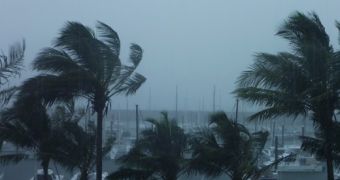It was only yesterday when we first reported on how the US East Coast is facing tremendous threats as a result of hurricane Sandy and its turning into a so-called Frankenstorm.
Recent news on this topic informs us that it is quite likely that ongoing phenomena such as climate change and global warming are playing their part in boosting this storm's aggressiveness, causing it to inflict more damage than it normally would.
Thus, Dr. Jeff Masters wished to emphasize the fact that, although cold waters can work towards weakening the intensity of the storm prior to its reaching land, it is quite likely that once hurricane Sandy becomes acquainted with the warmer-than-average ocean temperatures in the Northeast US, it strength will up.
Apparently, this is because warmer water temperatures in these coastal areas foster higher vapor concentrations in the air and can therefore lead to heavier rain.
As Dr. Jeff Maters puts it, “Given that ocean temperatures along the Northeast US coast are about 5°F above average, there will be an unusually large amount of water vapor available to make heavy rain.”
Furthermore, “If the trough of low pressure approaching the East Coast taps into the large reservoir of cold air over Canada and pulls down a significant amount of Arctic air, the potential exists for the unusually moist air from Sandy to collide with this cold air from Canada and unleash the heaviest October rains ever recorded in the Northeast U.S., Nova Scotia, and New Brunswick.”
Seeing how these rather high ocean temperatures are part and parcel of the environmental shifts brought about by climate change and global warming, it must not come as a surprise that there are some who argue that, but for these ongoing phenomena, said storm would have probably caused significantly less damage.
For the time being, the US National Oceanic and Atmospheric Administration refused to explicitly link global warming to the increased violence of this weather manifestations.
Still, it was not very long ago when a researcher working with the Tel Aviv University drew attention to the fact that climate change can lead to more violent storms.

 14 DAY TRIAL //
14 DAY TRIAL //